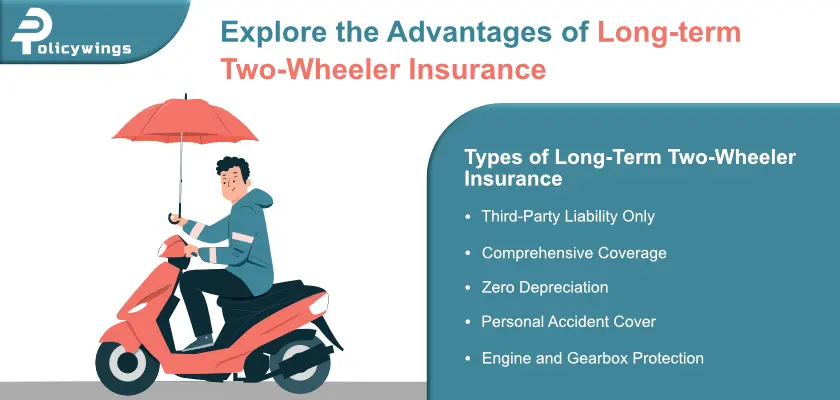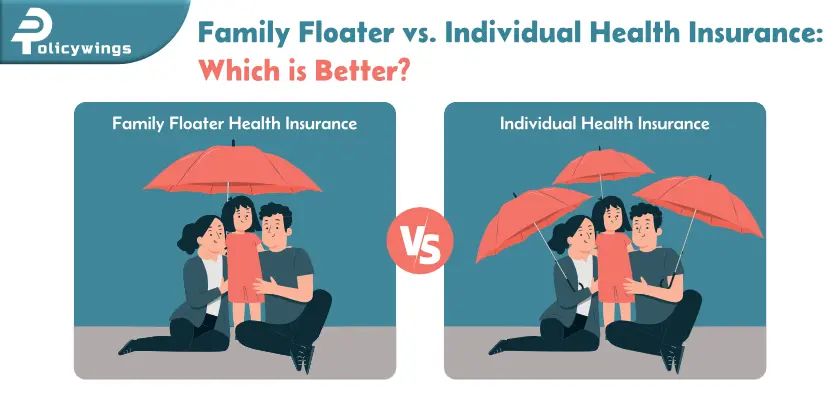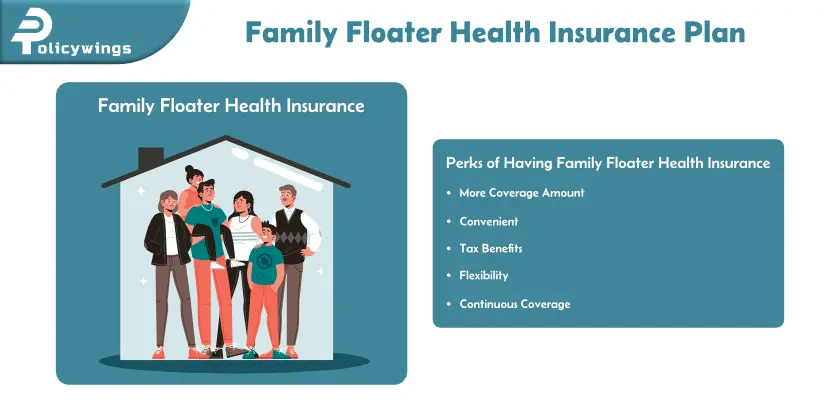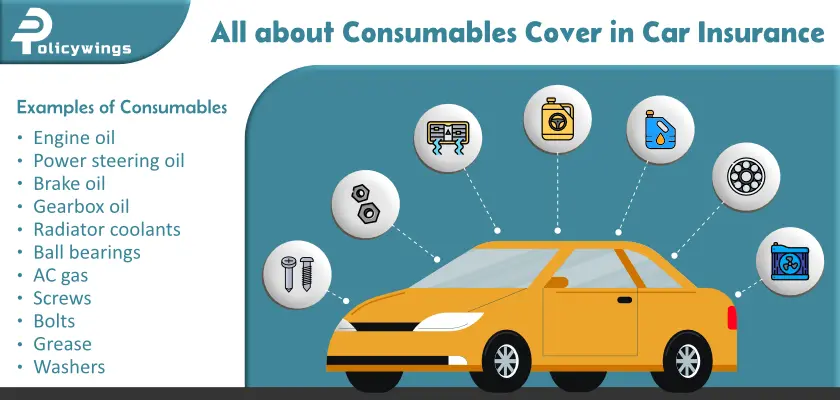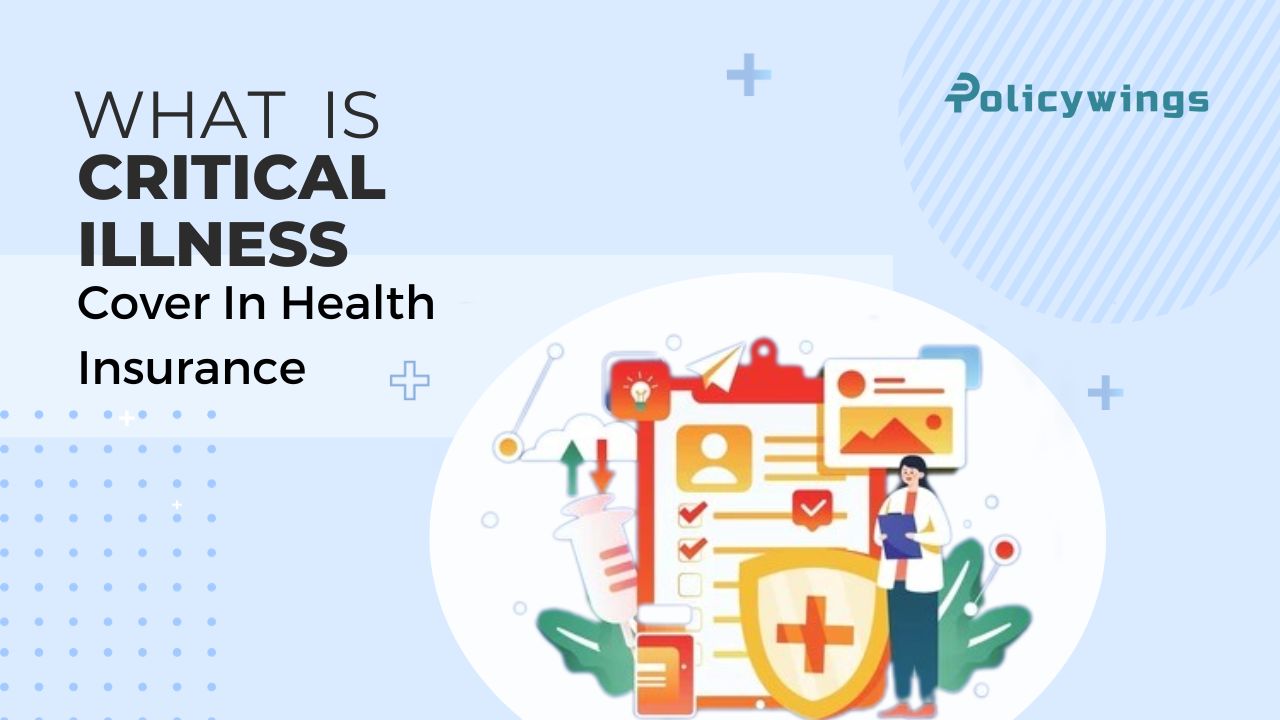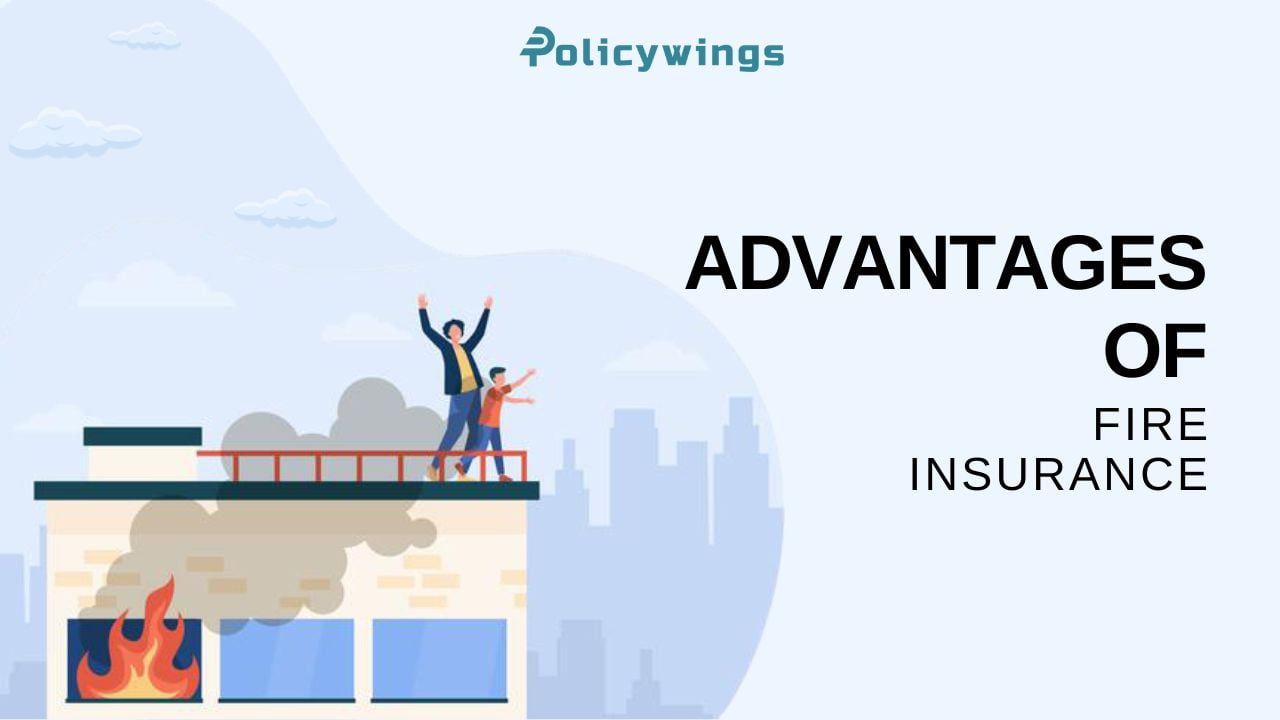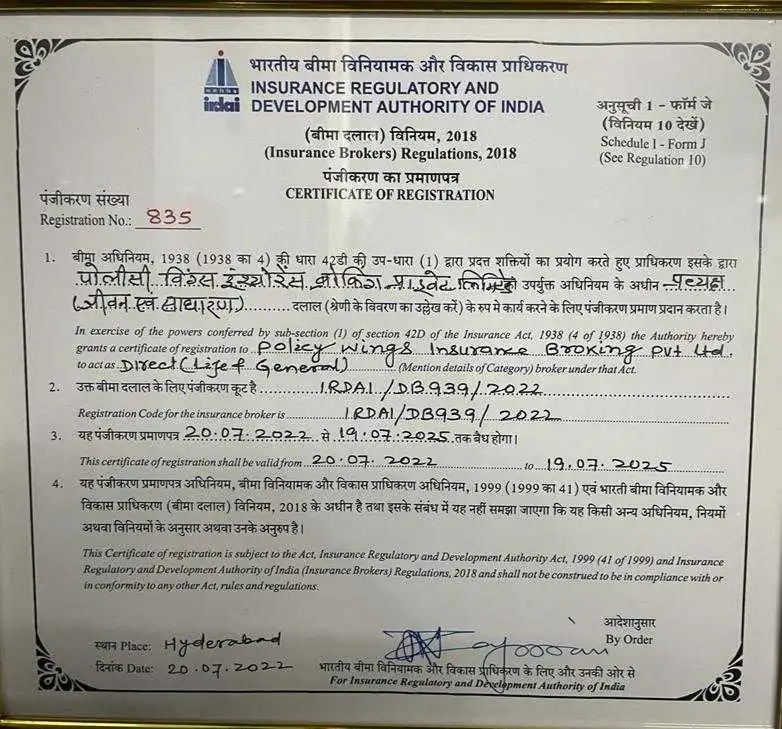Critical Illness Cover Vs Health Insurance
Easy Navigation
Critical Illness Cover Vs Health Insurance
In India, the cases of critical illnesses are increasing every year at an alarming rate. According to Cancer Registry data, 8,00,000 new cases of cancer alone are expected to be diagnosed every year. These illnesses are affecting the younger population as well. Considering the high and unpredictable treatment costs for critical illnesses, a regular comprehensive health insurance plan may not be sufficient. A higher and exclusive coverage is needed for critical illnesses in addition to comprehensive health coverage. However, most people are not aware of the difference between health insurance and critical illness cover.
This article will help you understand the meaning, coverage and differences between critical illness cover vs. health insurance.
Comparison between critical illness insurance and normal health insurance
Comparison between critical illness insurance and normal health insurance
Before we compare critical illness cover and health insurance, let us first understand the meaning of each type of insurance.
1. Health insurance – It is a comprehensive health insurance plan that covers a wide range of medical expenses such as hospitalisation expenses, surgical expenses, doctor’s fees, medicines, and pre and post-hospitalisation expenses. These plans are indemnity insurance plans that cover the actual medical costs incurred by the insured.
2. Critical illness cover – It is a specialised health insurance plan that covers the critical illnesses listed in the plan. It provides a fixed benefit as a lump sum amount on the diagnosis of a covered critical illness. This lump sum amount can be used without any restriction, to cover medical expenses, loss of income or any other financial requirement.
Here is how both types of plans differ from each other.
1. Coverage
A normal health insurance policy covers actual medical expenses for hospitalisation due to accidents, covered illnesses, pre-existing diseases etc., alternative treatments, domiciliary hospitalisation, modern treatments, daycare procedures and much more. On the other hand, a critical illness plan covers critical illnesses as listed in the policy. These illnesses differ from insurer to insurer and the coverage offered is beyond medical expenses such as loss of income, lifestyle expenses, etc.
2. Benefits offered
A standard health insurance plan is an indemnity plan which pays as per the medical expenses incurred. However, a critical illness plan is a fixed benefit plan that gives a lumpsum payout that can be used for any financial requirement in addition to covering medical expenses.
3. Sum Insured
A regular health insurance plan may have a sum insured value of up to a few lakhs only but a critical illness plan offers high sum insured values of up to ₹ 1 crore to ₹ 3 crores. The high sum insured is required to cover the expensive treatment for critical illnesses.
4. Premium
In a regular health insurance policy premium depends on many factors like the sum insured, coverage offered, members covered, medical history, age of the policyholder, and the insurance company. Since these are comprehensive plans the premium is higher. In a critical illness plan, the premium depends on the number of critical illnesses covered, the sum assured and the insurance company. The premiums are not as high as a comprehensive health insurance plan.
5. Waiting period
A regular health insurance plan has an initial waiting period of 30 days, which is not applicable in case of accidents. For pre-existing and other specified diseases it may range from 2 to 4 years. For critical illness plans, the waiting period varies among insurers, and policyholders can only submit a claim for a covered illness diagnosis after fulfilling the waiting period stipulated in their policy.
6. Survival period
In a critical illness plan, the survival period is the minimum period, the insured needs to survive after the diagnosis of the critical illness. A regular health insurance plan does not have any survival period.
7. Validity
A standard health insurance policy is valid till the sum insured is exhausted or the policy expires. A critical illness policy is valid till a claim is filed or the policy expires.
What exactly is a benefit plan or critical illness insurance all about?
A critical illness plan is a kind of benefit plan providing coverage for a number of serious diseases like cancer, heart stroke, major organ transplant etc. The policyholder receives a predetermined benefit in the event of a covered illness diagnosis occurring after the policy’s inception. Let us have a look at the key features of a critical illness plan.
1. A critical illness plan is available both as a rider with a health insurance plan as well as an independent policy.
2. These plans offer a high sum insured at a reasonable premium and offer tax deductions on the premium paid.
3. It provides a fixed benefit as a lump sum amount after a survival period on the diagnosis of a covered critical illness. Since it is a fixed benefit plan a claim can be filed only once in a critical illness plan.
4. A critical illness plan has a waiting period ranging from 30 to 90 days and a claim can be filed only after completing this waiting period.
5. There is no restriction on how you use the lump sum amount, you can use it to cover other financial obligations in addition to covering the medical costs.
6. The number of diseases covered under a critical illness plan depends upon the insurance company. However, most insurance companies cover up to 36 critical illnesses.
7. Many critical illness plans cover the treatment taken abroad.
Some diseases covered under a critical illness plan
Critical illness plans cover a broad range of life-threatening diseases. Some common critical illnesses that are covered in a critical illness plan are;
1. Cancer
2. Stroke
3. First heart attack
4. Kidney ailment
5. Bypass surgery
6. Multiple sclerosis
7. Paralysis
8. Major organ transplant
It is recommended to check with your insurer what major diseases are covered and select a plan that suits your requirements and is relevant to your medical conditions and family medical history.
Why are regular health insurance plans insufficient to cover critical ailments?
Regular health insurance plans are indemnity plans that cover routine medical costs actually incurred in a treatment. These plans are not sufficient to cover the high costs of critical illness treatments because they do not offer high sum insured values. A critical illness treatment requires a huge sum of money which can be covered using a critical illness plan only. Here are the reasons why regular health insurance is insufficient to cover critical ailments.
1. High premium
Regular health insurance plans have high premiums because it provide comprehensive medical coverage compared to a critical illness plan which comes with an affordable premium, and covers a limited set of specified diseases.
2. Coverage for medical expenses only
Regular health insurance plans provide coverage only for medical expenses due to hospitalisation, surgery, daycare procedures, pre and post-hospitalisation, etc. However, a critical insurance plan covers expenses that are beyond the coverage of a regular health insurance plan such as loss of income, debt payment, lifestyle changes, etc.
3. Longer waiting period
A regular health insurance plan has long waiting periods for specified illnesses or pre-existing diseases starting from 2 years to 4 years. So the insured has to wait for a long time before he can file a claim. In a critical insurance plan waiting period ranges from 30 days to 90 days, which is much shorter compared to a regular health insurance plan.
4. Low sum insured
A regular health insurance plan offers a lower sum insured which is not sufficient to cover the treatment costs of critical illnesses. On the other hand, a critical illness plan offers a high sum insured which not only covers treatment costs but also acts as financial support to fulfil other obligations.
How to File a Claim?
For a regular health insurance policy, there are two types of claims: cashless and reimbursement.
1. Cashless claims are filed when treatment is taken at a network hospital. The insured does not have to pay any bills and the insurance company directly settles the bill. However, the insured needs to inform the insurance company beforehand if hospitalisation is planned. In case of emergency hospitalisation, the insured should inform the insurance company within 24 hours of the hospitalisation.
2. A reimbursement claim is filed when the treatment is taken at a non-network hospital. The insured has to pay the bills out of his own pocket. A claim is filed after discharge from the hospital with all required documents.
3. To file a claim, the insured needs to submit a claim form duly filled and signed along with all the relevant documents required by the insurance company.
4. The insurance company verifies the claim application and the documents, once the claim request is approved the claim amount is settled.
Critical Illness Claim Process
If the insured is diagnosed with a covered critical illness, he can file a claim under the critical illness plan after the survival period. Note that a claim can be filed only once in a critical illness plan after that the policy gets closed.
1. Submit a claim form duly filled and signed along with relevant medical documents and reports confirming the diagnosis.
2. The insurance company will verify all the documents and if your claim request is approved, a lump sum payment of the sum assured is made.
3. The amount received can be used to cover medical as well as non-medical expenses.
Critical Illness Cover Vs Health Insurance - Which Insurance Is Better?
It is difficult to say which insurance is better a critical illness cover or a standard health insurance plan because every individual has unique requirements and you should purchase an insurance plan according to your medical history and current medical condition. However, both, a health insurance plan and critical illness cover are a necessity today and one cannot replace the other.
A standard health insurance policy is a must for you and your family for basic health coverage against hospitalisation and other medical expenses. It is a must-have as it allows multiple claims and can cover the entire family.
A critical illness plan is also an important insurance cover you should have if you have a family history of any such disease or you work in an environment that exposes you to the risk of any such disease. Considering the rising cases of critical illnesses and expensive treatments, every individual should invest in a critical illness plan. Most of these ailments are affecting the younger population also, due to drastic lifestyle changes and stress. Hence, it is recommended to buy a critical illness plan when you are young so that the waiting period is over in case you need to file a claim.
Tips to choose the right Critical Illness Cover
Here are some important factors to consider when looking for a critical illness cover.
1. Check the maximum age limit in a critical illness plan because the risk of critical illness increases with age. Many critical illness plans have an upper age limit and will not allow renewal after you reach the upper age limit. Hence select a plan with lifelong renewal.
2. Check the exclusions of a critical illness plan. For instance, pre-existing conditions, diseases caused due to a congenital disorder, etc. are not covered. These exclusions vary across insurers.
3. Asses your health conditions and future financial obligations before choosing a sum assured value. Make sure you opt for a value that is adequate to cover the treatment and other expenses.
4. Do check the claim settlement ratio of the insurer to get an idea of how many claims the company has settled in the past.
5. Go for a plan with minimum survival and waiting periods so that you do not have to wait for long to file a claim.
6. Some plans offer discounts on premiums if you opt to pay for a longer tenure.
7. Check if there are any additional benefits such as dialysis, physiotherapy, reconstruction surgery etc.
Conclusion
Comparing critical illness cover vs. health insurance, we can conclude that both serve different purposes. Having one of the two does not mean that you don’t need another. It is advisable to invest in both a standard health insurance plan and a stand-alone critical illness cover to be fully prepared for any medical contingency in future. Check the inclusions and exclusions of both types of insurance plans and opt for plans that are relevant to your medical needs.
Frequently Asked Questions
Depending on the age and the health of an individual, it may require a medical check-up. However, if you are below 45 years old and have good health without any medical condition, you may not need to undergo a medical checkup.
Yes, you can buy health insurance with a pre-existing condition but you may have to pay a high premium. Also, there will be a waiting period applicable before you can file a claim.
Yes, you can get a tax benefit on the premium paid towards a critical illness plan under section 80D of the Income Tax Act.
It depends on the plan and the insurance company. Some plans offer coverage for specific critical illnesses as part of the coverage. Some offer it as an additional cover on payment of additional premium and some plans may not offer coverage for critical illnesses at all.
Some common diseases covered in a critical illness plan are
◦ Cancer
◦ Stroke
◦ Paralysis
◦ Heart attack
◦ Kidney failure
◦ Organ transplant
◦ Coma
◦ Repair of heart valves, etc.
It depends on your personal preference, medical needs and history. If you are healthy and do not have a family history of any critical illness, a rider critical illness plan may be sufficient and affordable. But if you have a history of critical illnesses in your family or are exposed to the risk of getting a critical illness, it is better to have a stand-alone critical illness cover as it will provide adequate coverage for high treatment costs.
A critical illness cover is a fixed benefit plan that pays a lump sum payout on the diagnosis of a critical illness. A health insurance plan is an indemnity plan that covers the actual medical expenses due to hospitalisation or any other medical treatment covered under the policy.
Check the exclusions of your critical illness cover. Some common exclusions include
◦ any disease not listed in the plan.
◦ It will not cover any critical illness during the waiting period.
◦ If an insured is diagnosed with a critical illness before the policy commencement, it will not be covered under the plan.
◦ Dental treatments, cosmetic procedures or any illness that is not chronic or life-threatening.
It depends on the illness, its treatment and the insured’s financial obligations.
Some insurers cover type 2 diabetes as part of critical illness coverage.
Leading Health Insurance Companies






